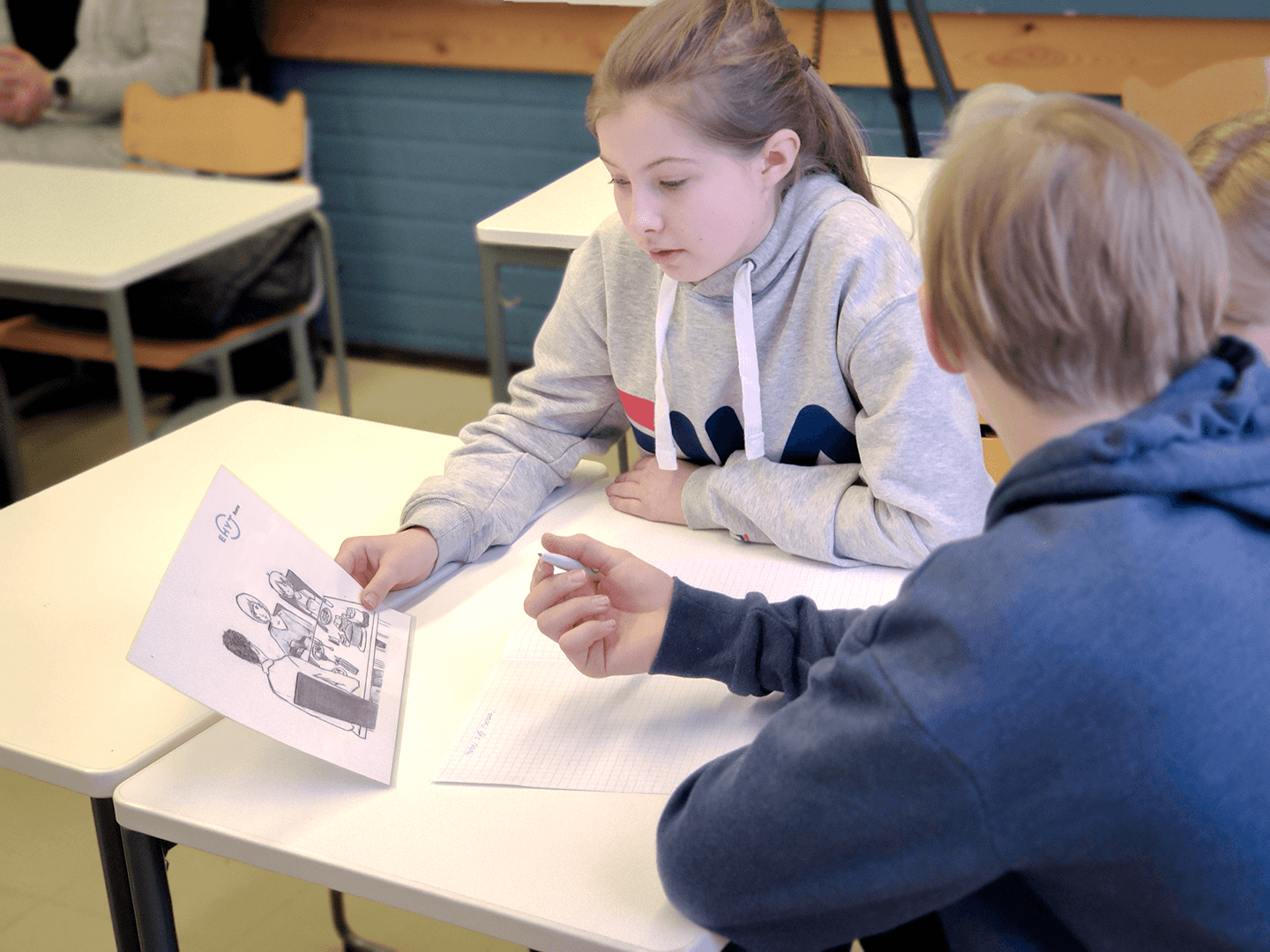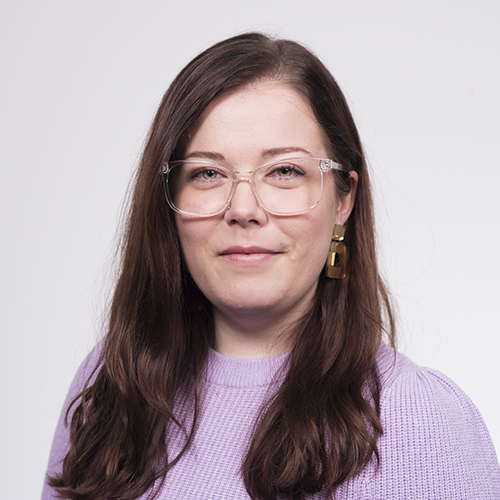Substance prevention education for primary schools
Can We Talk? is an innovative story-based education method for primary schools that encourages children to ask questions about substances and discuss situations where they might see substance use. Parents and carers will achieve a better understanding of how children see and experience substance use.

For whom?
Drug education lessons for primary school students in grades 5 and 6 and a parent meeting for their parents/guardians. Lessons are offered in English, Finnish and Swedish. The parents’ meeting is offered together with the lessons and is included in the package.
What?
A substance education method that is based on written stories and group discussion. The lessons deal with social situations where primary school students may encounter intoxicants and substance use and answers questions about alcohol and tobacco that children might have. Duration of one lesson is 2 x 45 min (90 min). One training day includes a maximum of 3 lessons per day.
Why?
Even primary school children see intoxicants in their surroundings and therefore have questions about intoxicants and substance use. The innovative story-based education method supports the age identity of primary school children, and encourages students to ask questions and participate in discussion. Storytelling offers a unique way for children to address difficult topics and develop an understanding of them. The method draws attention to the fact that alcohol and smoking models are transmitted to children in their social environment. Parents will achieve a better understanding of how children see and experience intoxicants.
Can We Talk? lessons
The lessons address children’s questions regarding alcohol, tobacco, and drugs. The lesson involves discussion on age-limits, curfews, the students’ perceptions of substance use, intoxicants and safety. Students write stories in groups using illustrations, which are shared in a joint discussion. Some of the illustrations deal with the prevention of substance use among adolescents, while others concern the example parents set for their children. The method is based on establishing a narrative distance and therefore students don’t have to share their personal experiences. We work with each group 2 x 45 minutes (90 min).
Parents’ Meeting
The aim of the parents’ meeting is to increase discussion on intoxicants and substance use between parents as well as the discussion at home between children and adults. The meeting offers information on substance use prevention and protective factors and discusses ways to support young children’s well-being in daily life. Parents are shown the written stories and the children’s questions and understand better how primary school students experience intoxicants and substance use. The stories are used to illustrate how social situations affect the image children get of drinking alcohol and smoking. The meeting offers a chance for parents to discuss concerns and share good practices in order to help children protect themselves when faced with peer pressure and societal pressure.
The meeting confirmed my thoughts about talking with children about this early on, even though the kids might not have an interest in using intoxicants at this age
Feedback from parent
Prices
Lessons are priced by day. Day price include 1-3 lessons and a parents’ meeting, and covers educators travel expenses.
| 1 day (max 2-3 groups) & parents’ meeting | 300 € per day / educator |
| More than 3 days | 240 € per day / educator |
Book a visit
For more information and bookings

Saarinen Sara
Education planner +358 44 796 7897 sara.saarinen@ehyt.fi More information about the personHow does the school prepare for the lessons?
The school will plan a schedule for assigned groups, so that each group works with us 2 x 45 min. Let us know your desired number of groups. We hope you can provide a space that is equipped with a projector and a screen/whiteboard. Power Point-presentation is used during the lessons. When planning the schedule, please be clear in which classroom/space lessons are held for each group.
Amount of participants per group
The preferred amount of students in one group is max. 30 persons. Combining students from different groups may affect the group dynamic and student participation, which is why it is advised to have the students remain in the group that they are familiar with. In order for every group to get a lesson that suits their educational needs, we suggest you asses whether students in need of special support/education participates with the rest of the group or in their own group. Lessons can be adapted to suit everyone’s needs. Let us know about any specific requirements.
Planning the schedule
The lessons are scheduled according to the schools’ own distribution of lesson hours. Scheduling of the lessons may vary depending on the amount of groups, the scheduled date, and available educators. The schools’ wishes are considered when organizing the training. One training day with 2 x 45 min lessons includes 3 groups max.

